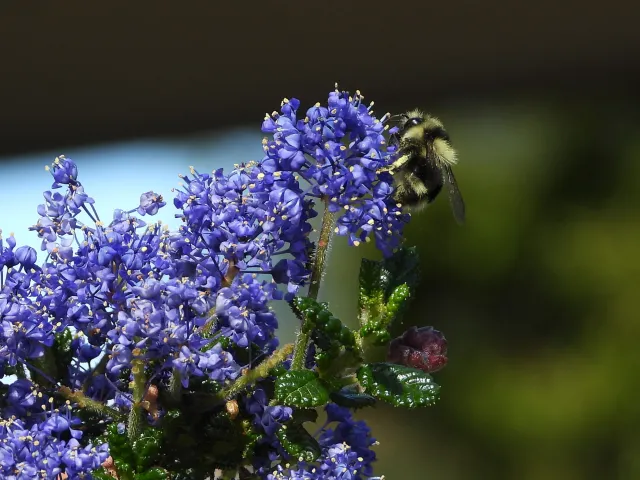Now is a Great Time to Prune Ceanothus (California Lilac)
Going by common names such as Blueblossom, California Lilac or Mountain Lilac, it's not surprising that Ceanothus are popular shrubs for many styles of gardens, with spectacular blooms in colors ranging from pale to very deep blue/purple or white. Blooming in late winter or spring, they are valuable early nectar sources for many kinds of bees. Sizes range from large shrubs to groundcovers. The popular Ray Hartman Ceanothus can approach 20 feet high and wide, while Diamond Heights Mountain Lilac generally stays below 12 inches tall. (See Calscape.org for more than 150 species and varieties.)
The beautiful winter/spring blooms come from flower buds that are set in late summer/early fall. While many kinds of shrubs are "pruned after flowering", for Ceanothus, there's one more factor to consider: they can be susceptible to infection if they are pruned during damp weather. In our area it's best to wait to prune until you have a warm, dry, midsummer day.
The article and presentation below cover some of the key tips for pruning. After taking care of dead, damaged, diseased and deranged branches, often only light tip pruning is needed. Please see:
- Pruning Tips and Techniques, an article from the California Native Plant Society
- Ceanothus Pruning, a presentation from the UC Master Gardener San Carlos Native Plant Habitat Garden
If you often find you have to cut large branches, you may want to consider whether the variety is suitable for its location. Trying to grow a large Ceanothus in a small space will lead to extra work for you and possibly a shortened life span for the Ceanothus. Select a variety that fits comfortably in the space, planting it far enough from walls or fences to allow access to the back of the shrub for maintenance.
More information on several Ceanothus varieties is available in Plant Notes and Slides under the Resources area of this website.

Page banner photo: Ceanothus thyrsiflorus. San Carlos Native Plant Habitat Garden, March 2024. Photo by C. Callas.
